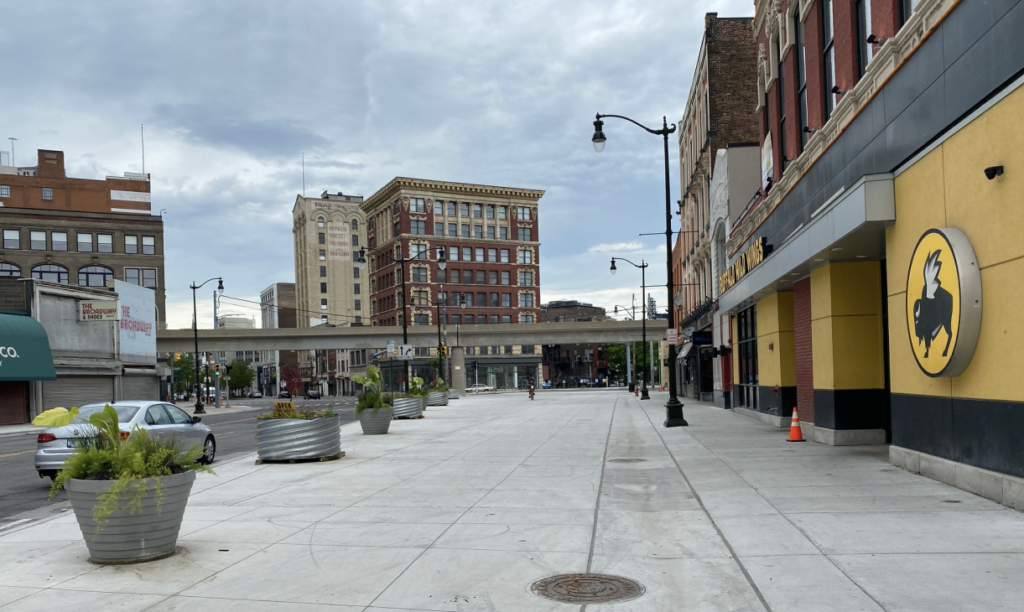Challenge #5 with Greektown Neighborhood Partner and Downtown Detroit Partnership
Detroit’s Greektown as we know it today was first developed by German immigrants in the 1830’s. While the neighborhood was primarily German during this period, other ethnic groups also called the area home. African Americans settled in the area known as Black Bottom, where the Chrysler Freeway and Lafayette Park is today. The Second Baptist Church established in 1857, the oldest African American parish in all the Midwestern United States played a pivotal role in the operation of the Underground Railroad.
By the early twentieth century the neighborhood had become increasingly multicultural. German immigrants began to move out of the neighborhood into areas further from downtown; between 1905 and 1910 the ethnic makeup transitioned from Germans to Greeks seemingly overnight. Through the help of Theodore Gerasimos, the first documented Greek immigrant to Detroit in 1890, newly arrived Greek immigrants began moving into the neighborhood and established businesses. Greek-inspired flourishes and details were applied to the German-built commercial buildings, carrying on a tradition in the neighborhood of thoughtfully customizing facades to suit business needs and celebrate cultural history.
The Randolph Street Commercial Buildings Historic District was entered into The National Register of Historic Places on July 8th, 1980 – recognized as a rare, surviving Victorian commercial streetscape in the heart of Detroit’s retail district. Over time the Randolph Street Buildings have housed a variety of tenants, earlier tenants include Independent Order of the Oddfellows and Laiter Brush Factory, and later photographers, jewelers, dry goods and clothing establishments. While the buildings and physical space have been altered many times, having new top stories added and in the 1950’s, cornices were removed during a city-sponsored removal, the Greektown neighborhood has remained a vital cultural hub within the City. Tiberius Neda of The Baltimore shared with us during an interview “even though I’m not Greek, I feel like family,”iterating passion within the neighborhood.
In the fall of 2019 two lanes of Randolph Street in front of the Commercial Buildings Historic District facades were incorporated into the “sidewalk,” including the mouth of Macomb Street where it meets Randolph Street, for the purpose of both creating a safer intersection and a public plaza. Greektown Neighborhood Partnership and Downtown Detroit Partnership partnered with our Challenge Detroit team to embrace the Design Thinking methodology, reimagining the space as an additional City park. Speaking with business owners in the neighborhood and a real estate/development team from Bedrock Detroit, each person echoed the desire for modern, reimagined Grecian motifs opposed to heavy, traditional Grecian architecture.
Envisioning ‘Randolph Plaza’ as warm and welcoming, blues, greens and oranges comprise the color palette, tiered flower planters adorn the perimeter as both a protective barrier and displays of native flora as a Grecian dome lures families and friends for photo ops. Ideally artwork such as a “Welcome to Greektown” slogan or pattern of triangles mimicking DDP’s logo painted on the bland concrete People Mover tracks liven up the space and increase pedestrian traffic to the plaza. A vital component of any indoor or outdoor space is wayfinding materials – signs, logos and even spoken messages. Greektown has the opportunity to reimagine how people receive directions to their favorite restaurants, a nearby venue or information about the space they occupy.
***

